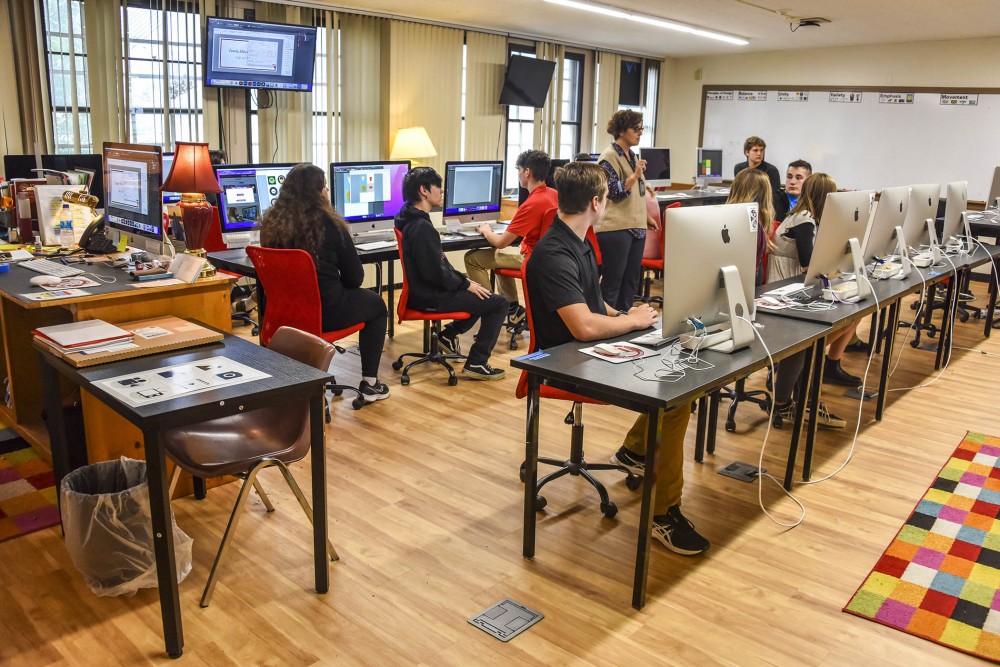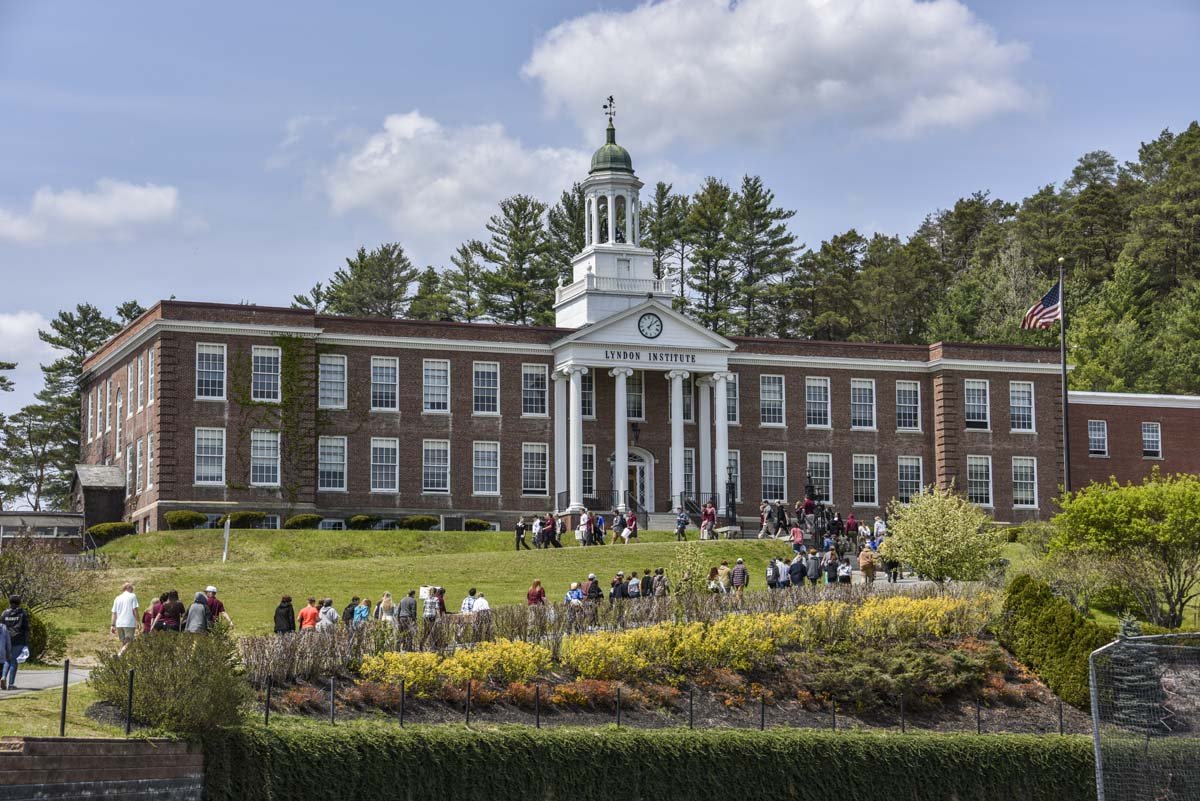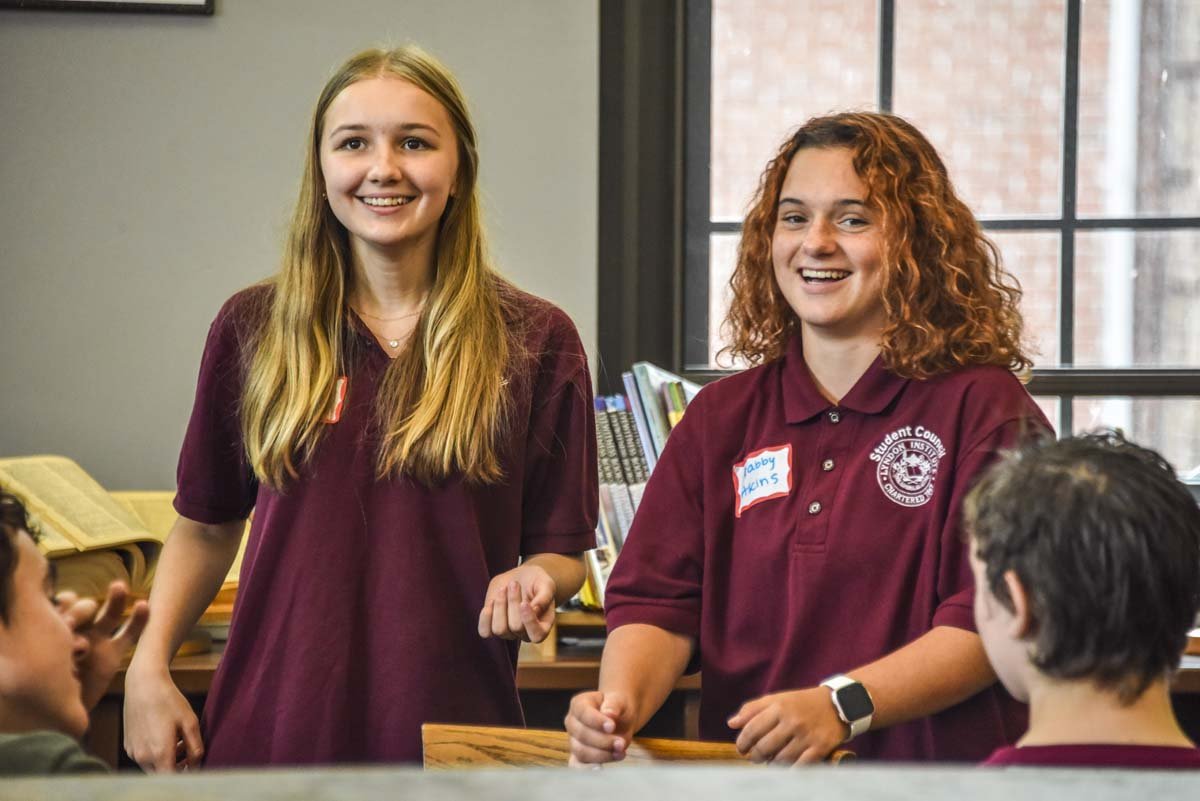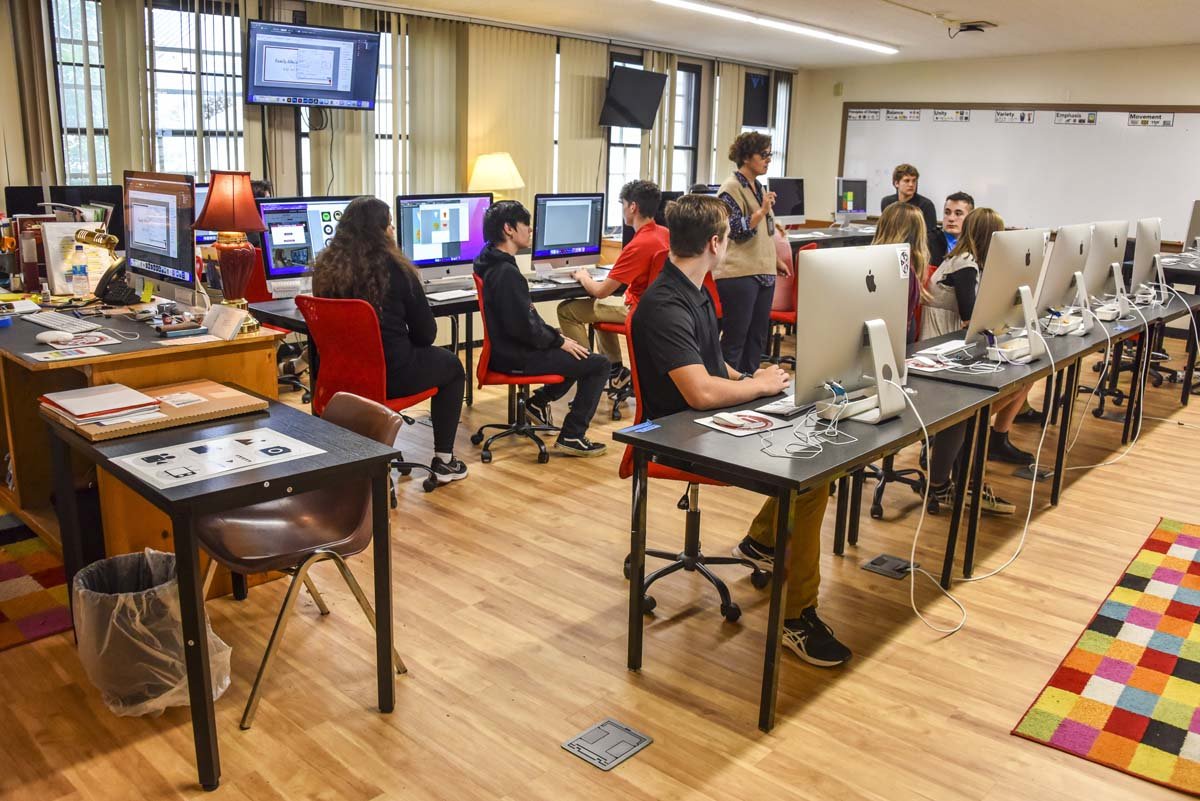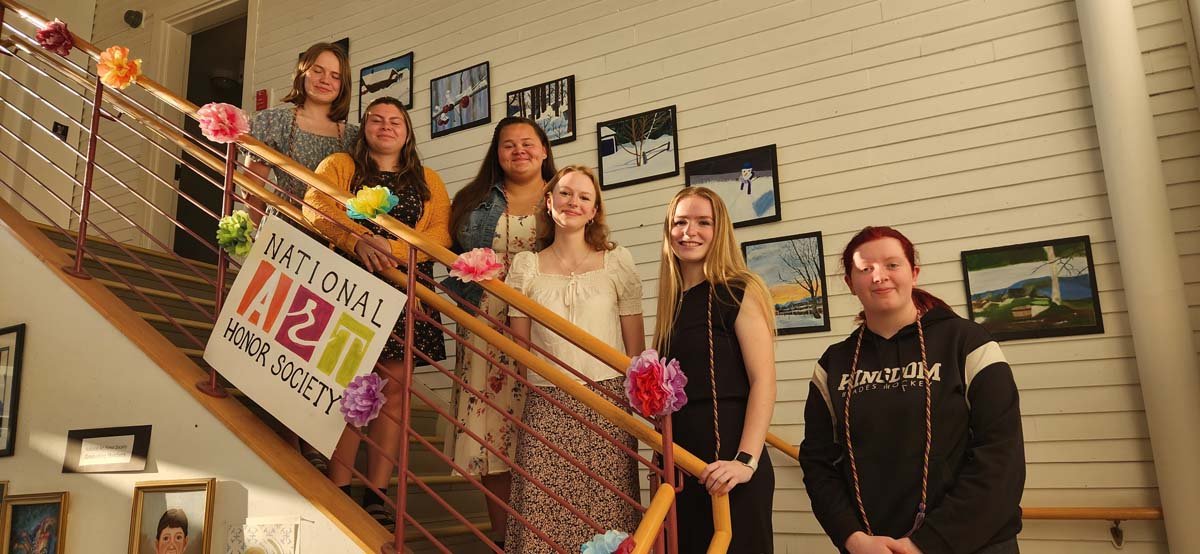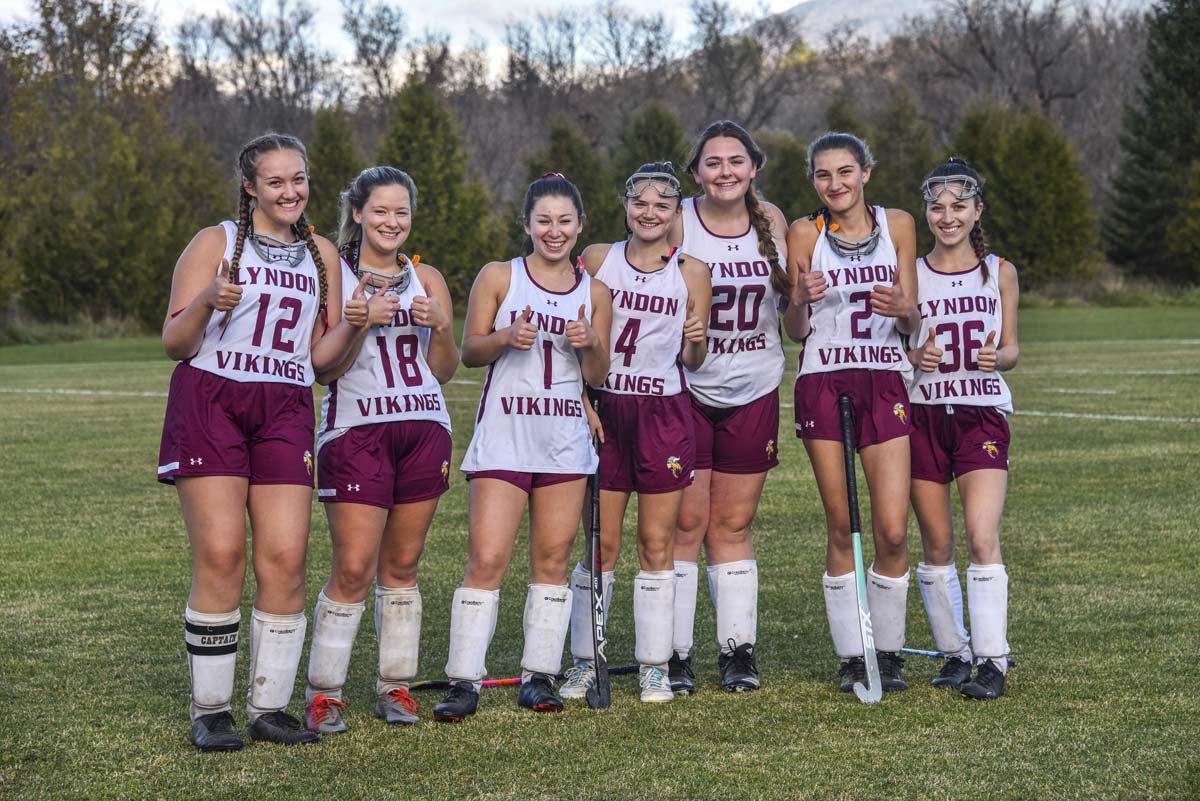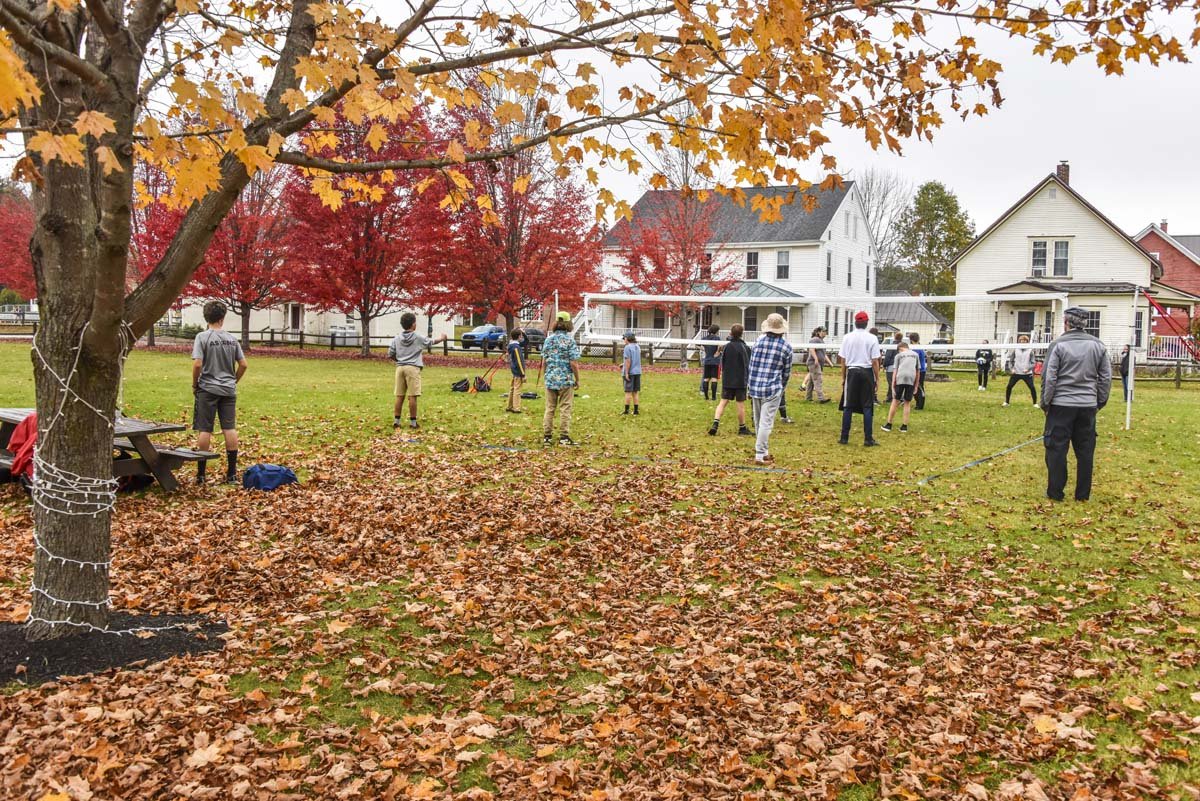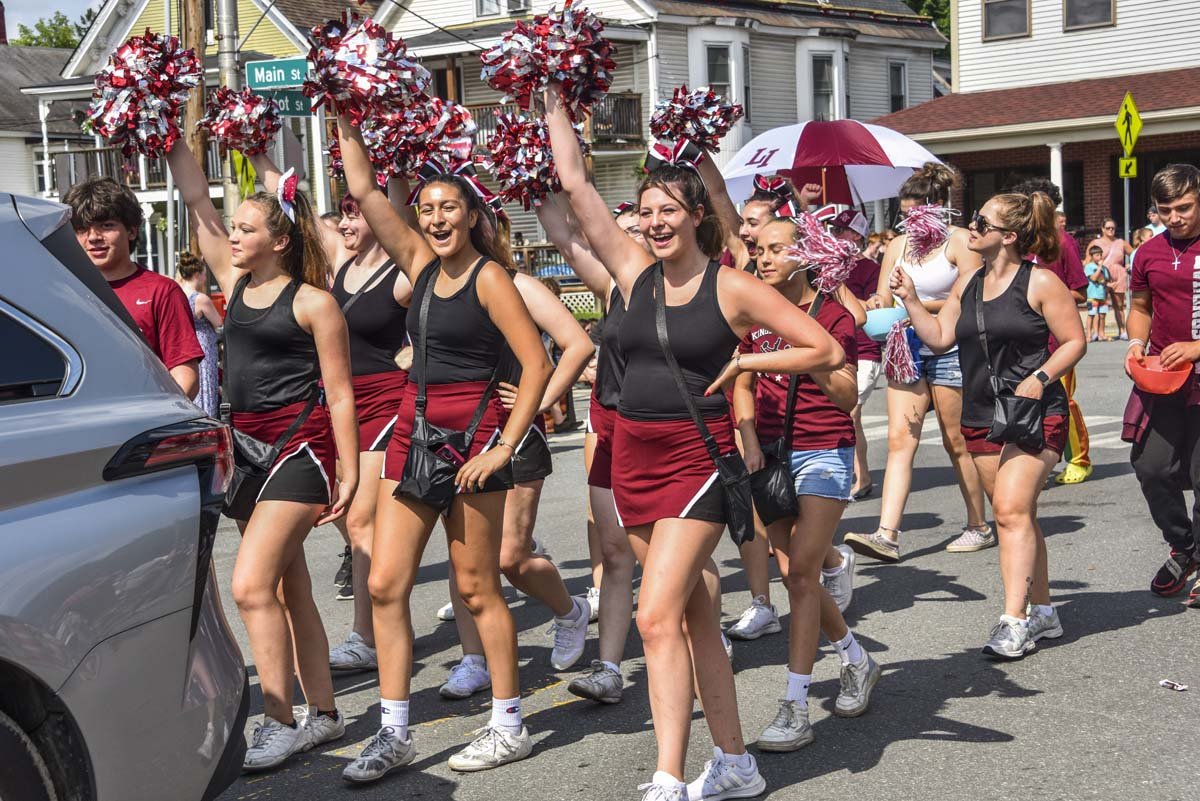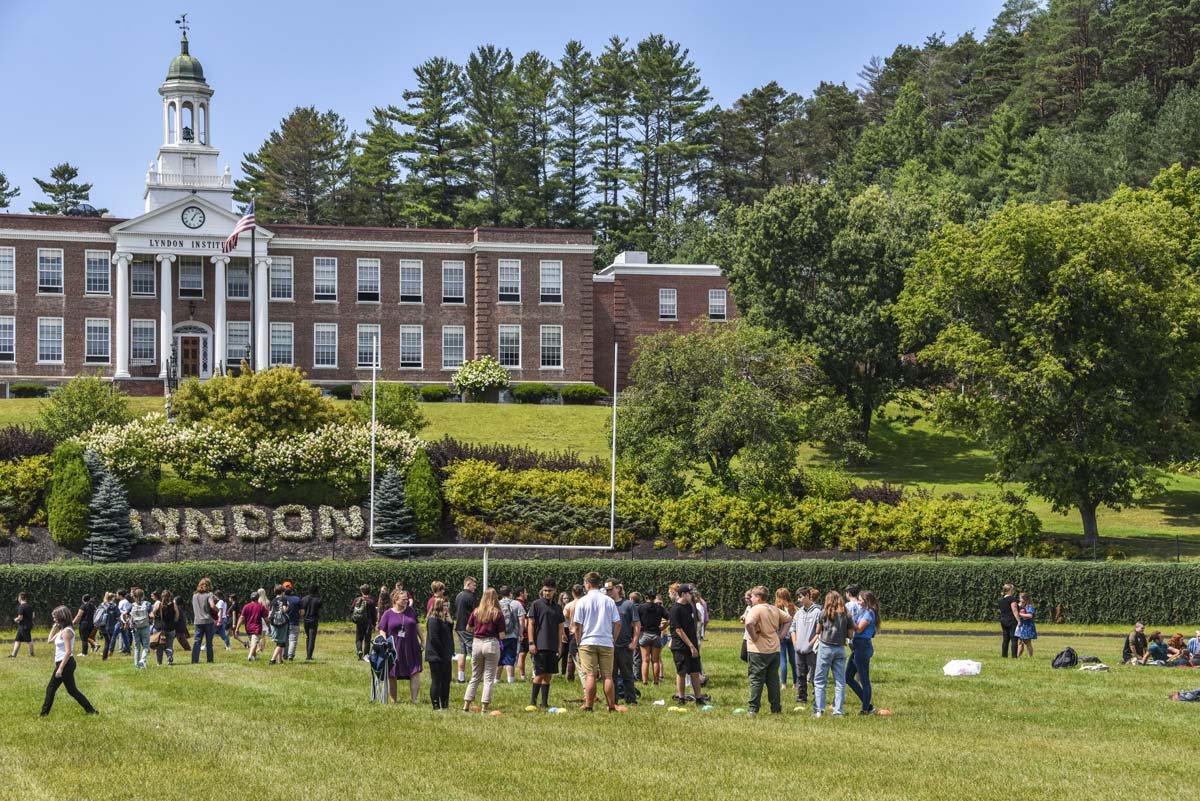- Our School
- Admissions
-
Academics
- Divisions and Faculty
- Commencement 2024
- January Term
- International Program (ESOL)
- College and Career Counseling
- Upward Bound
- Library/Monahan Academic Commons
- Career/Technical Education
- Lyndon Learning Collaborative
- Flexible Lyndon Institute Pathways (FLIP)
- Specialized Instruction
- Adult Continuing Education
- Lyndon Institute Course Catalog
- Student Services
- Arts
- Athletics
- Campus Life
- Support LI
- Alumni
« Back
New Digs for Design
September 22nd, 2022
By David Stahler Jr.
Lyndon Institute’s Graphic Design Program has grown over the years, both in its offerings and its enrollment. Originally begun by professional designer and artisan Ellen Levitt in the late 90s, the program blossomed with the opening of the school’s Norris Center for the Arts in the early 2000s, a facility that offered the program a dedicated space, one that incorporated a modern Macintosh computer lab.
With Levitt’s retirement in 2013 and the arrival of Bridget Atkins in 2014, the program shifted from a focus on “graphic arts” to “graphic design,” putting a greater emphasis on the business aspects of the discipline, a change reflected in the program’s move from the Art Department into the school’s Career Technical Education (CTE) division and one that also reflected Atkins’s own professional background, having moved from the world of business to education.
Over time, the program expanded to four levels of graphic design, that latter two of which now function as dual enrollment courses for which students can receive college credit—and which are also part of the school’s Lyndon Learning Collaborative (LLC) program—through an articulation agreement with Vermont State University-Lyndon (formerly NVU-Lyndon). In addition, students can also earn professional Adobe certifications in Photoshop, Illustrator, and InDesign.
With these expansions have come growing pains as more students have joined the program, eager to take advantage of the opportunity to earn both college credit, industry certifications, and marketable skills. “With the increasing enrollment, it was becoming clear that we were outgrowing our space,” Atkins said.
The stars aligned this year, when The Thaddeus Stevens School—which had been occupying LI’s Elizabeth Harris Brown building—moved to a new campus in East Burke, providing the Graphic Design Program with an opportunity to move into an expanded space in Harris Brown. The move was, in large part, made possible through the generosity of trustee Laurie Boswell, a former long-time head of nearby Riverside School and well-known education author and consultant.
A recent addition to the LI board, Boswell helped fund the renovation of several rooms in Elizabeth Harris Brown, including space for the school’s admission’s office and marketing department. But her first priority was helping establish a new location for the Graphic Design Program in honor of her late husband Arthur, who had worked as a pressman for Harrison Publishing in Littleton, NH, and who had a love for design.
The vision was for LI to host one of the premier graphic design labs in Vermont. With Boswell’s support, Atkins visited a host of facilities around the state, including labs at NVU and Castleton, speaking to faculty and studying different layouts. Boswell also sponsored a trip Atkins took to Savannah College of Art Design (SCAD) in Atlanta, Georgia to study their facilities. After a summer of research and hard work, the result is a new state-of-the-art lab.
“The goal was to create a space that evokes the feeling of an actual graphic design firm,” said Atkins. “As we prepare students for the professional world, it helps to have an environment that reflects what they will experience in the workplace. And I try to run our classes—especially Graphic Design 3 and 4—as if the students were working in an actual design firm.”
Walking in, one immediately gets a sense of what she means. The bright space—with its shiny floors, contemporary furniture, and new high-tech equipment—feels less like a classroom and more like an urban office.
The space comprises two interconnected rooms—a production lab and a classroom lab.
The production lab features a large conference table, new production equipment for cutting, trimming, and mounting, and a new large-format printer that allows for the printing of movie poster-size prints, as well as labels and stickers for package design work. The space also features new furniture, a new wide-screen TV for group presentations, and a “client lounge” area with comfortable sofas and chairs where student designers can meet with potential clients—including those from local businesses—to review projects and brainstorm ideas.
The other half of the new space is a classroom lab where students can work at one of twenty MAC stations, including six brand new computers. “It’s a classroom, but even here the layout is similar to what you might see at a design firm where people often work in close proximity as they collaborate on projects,” said Atkins.
Atkins is thrilled with the new space and the kind of real-life business environment it offers students.
“Being able to spread out and not be cramped together in one room is a plus. Class typically begins with a kickoff briefing meeting in the production lab before shifting to the classroom lab, though students are often working in both areas.” Asked if there were any other important differences, Atkins jokes, “I’m definitely getting more exercise moving between the two rooms and working with groups that are more spread out!”
“This new space has elevated students’ behavior, encouraging them to see themselves as junior designers rather than just taking a class,” she adds. “They are taking graphic design even more seriously and pushing their work accordingly.”
Best of all, the upgraded lab—one that brings together creativity, technology, and communication skills—allows LI to host more students, offering more opportunities to pursue a future-oriented career in a growing industry.
For those interested in seeing the new design lab in person, LI will be holding an open house in the Elizabeth Harris Brown building the morning of the LI-St.J game on October 22nd from 11:00 a.m. to 12:30 p.m. Members of the public are welcome to stop by for a tour and enjoy some refreshments.
Posted in the category Front Page.

